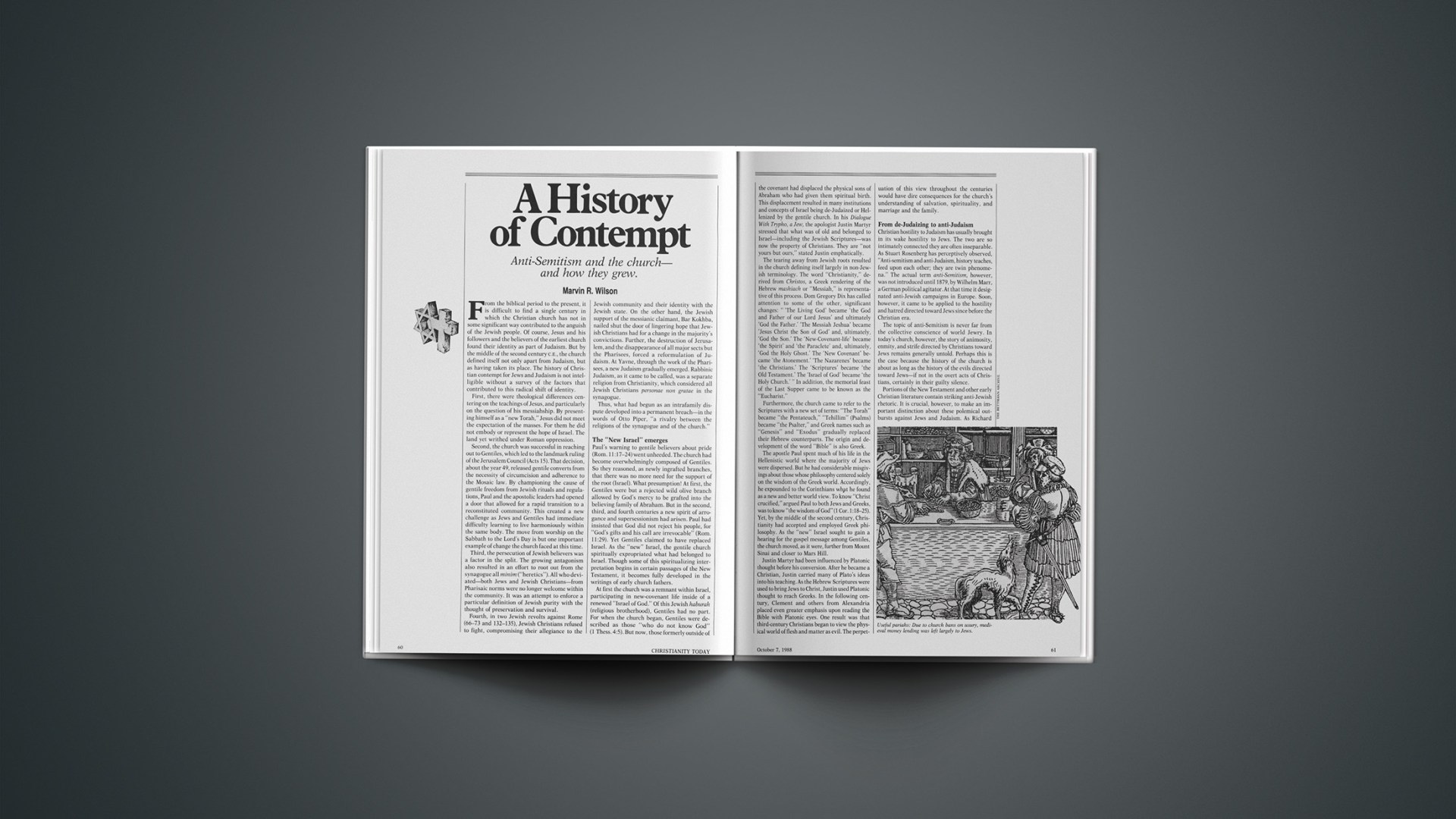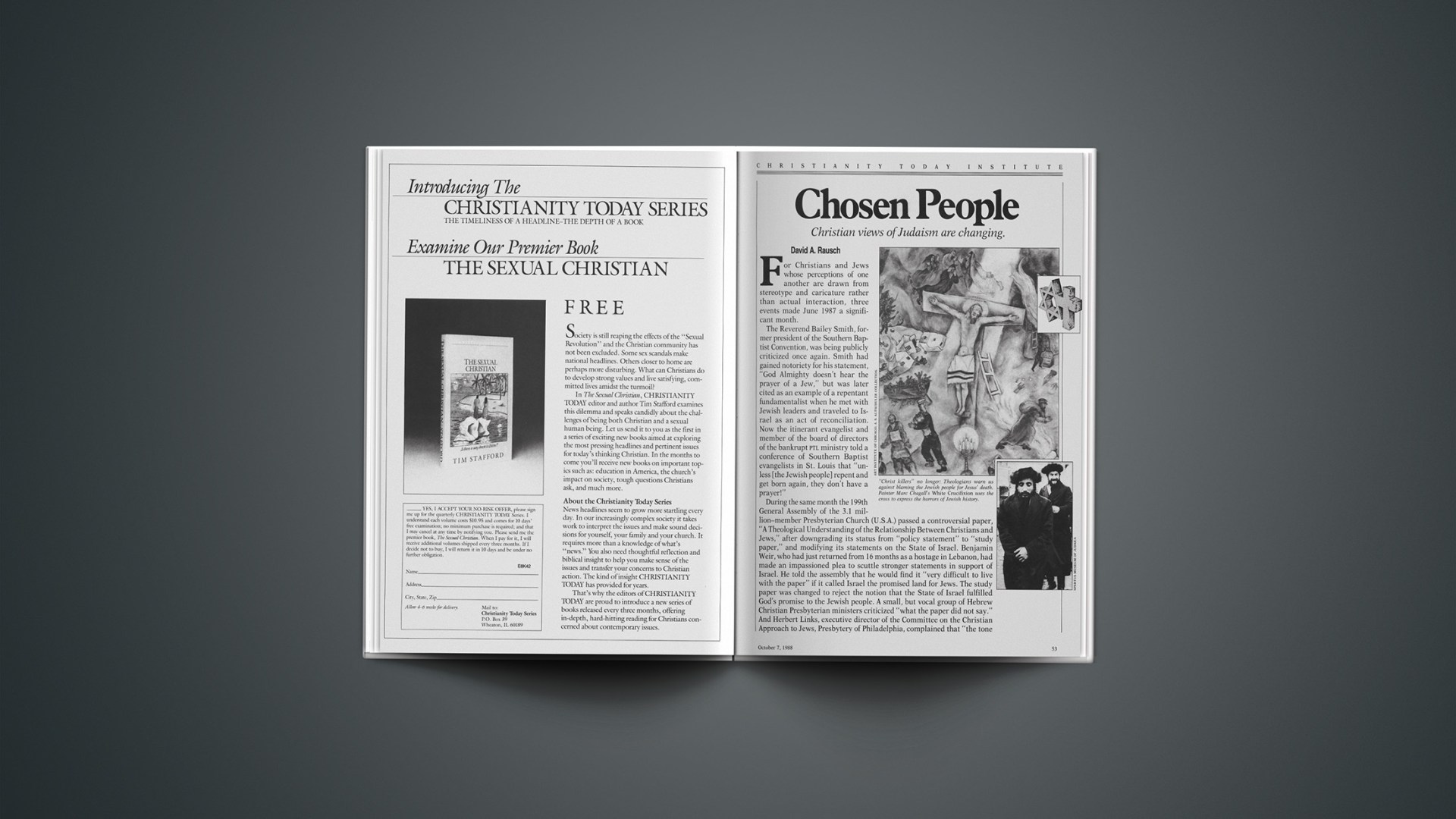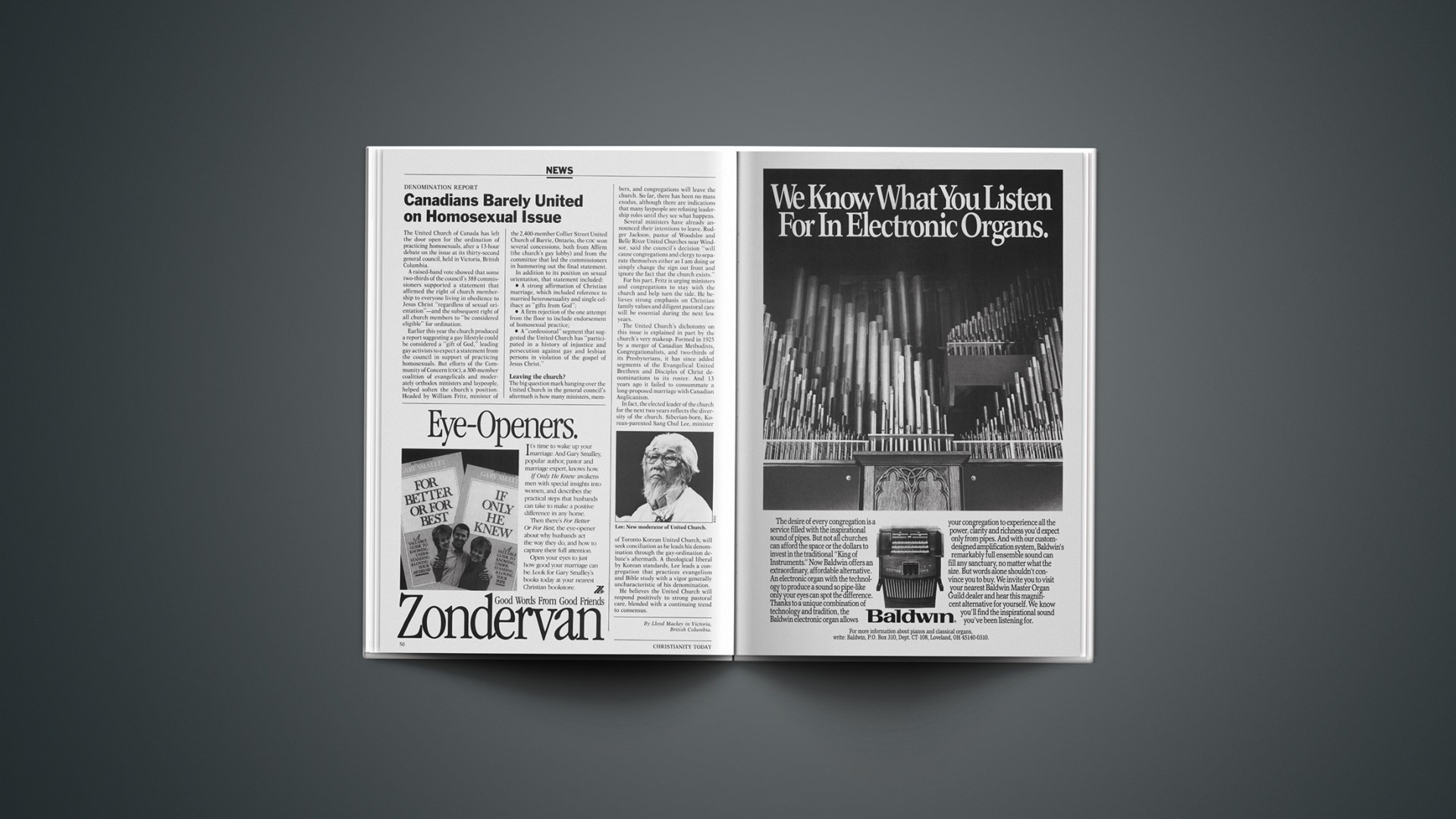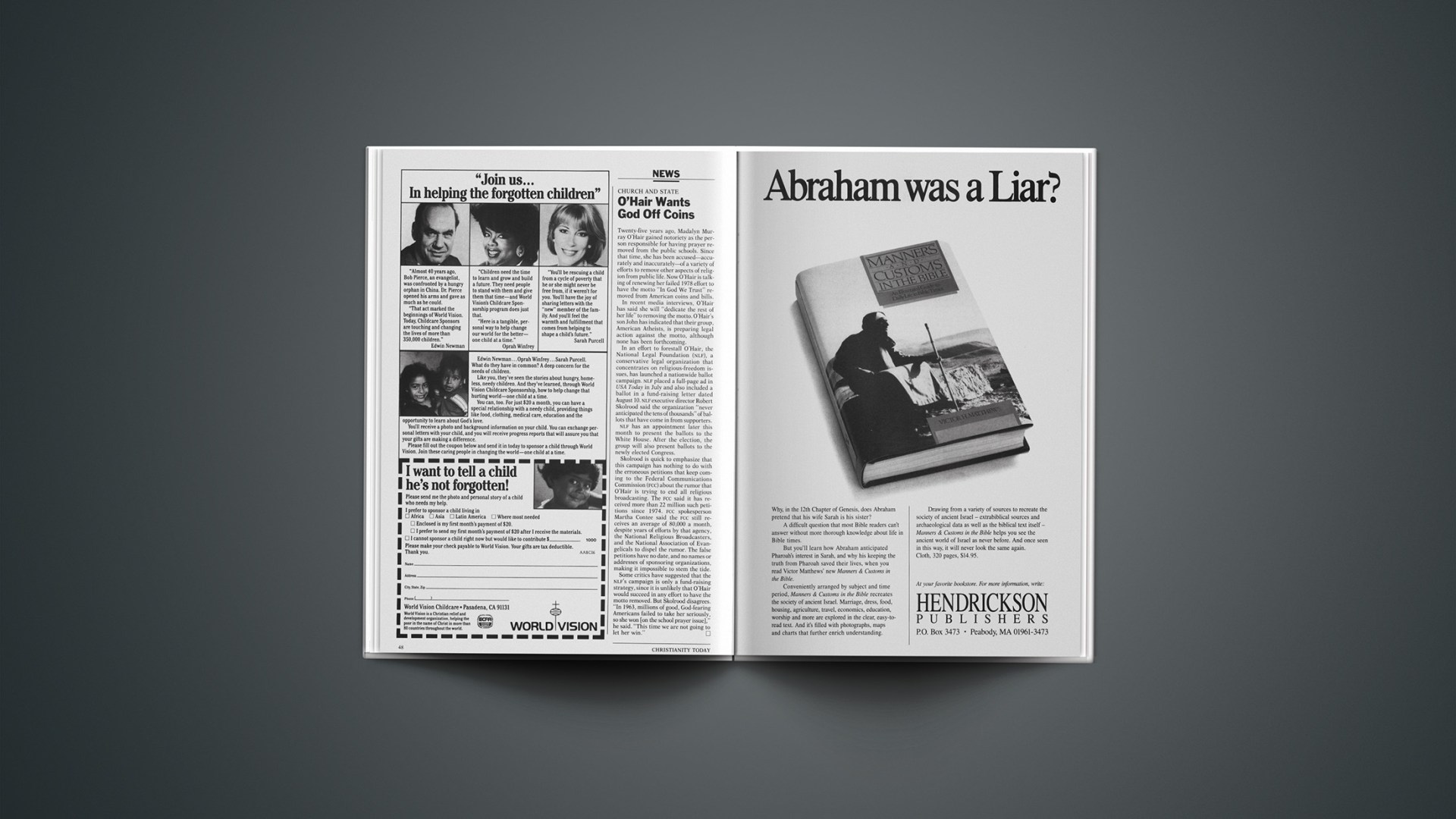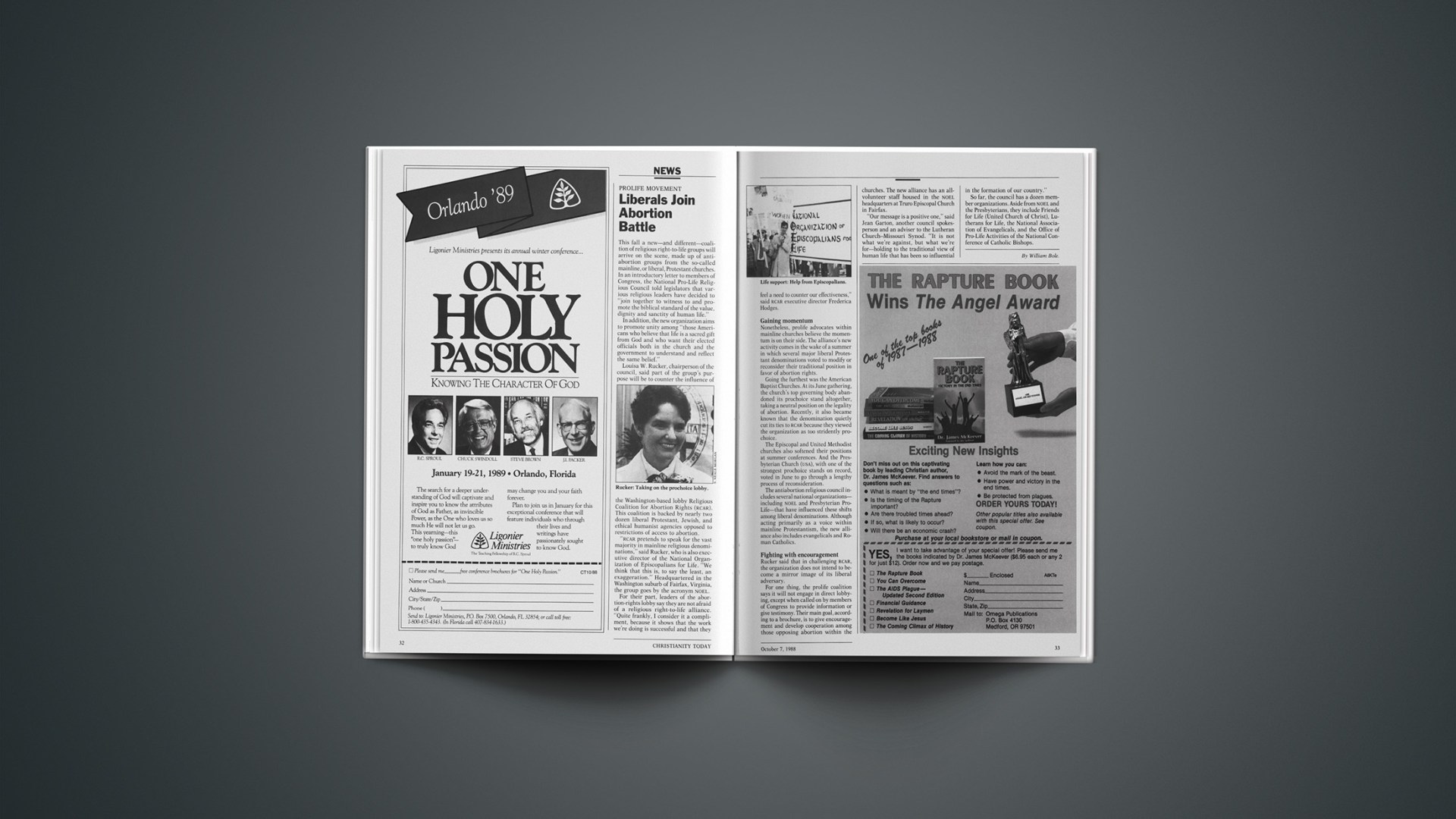Anti-Semitism and the church—and how they grew.
From the biblical period to the present, it is difficult to find a single century in which the Christian church has not in some significant way contributed to the anguish of the Jewish people. Of course, Jesus and his followers and the believers of the earliest church found their identity as part of Judaism. But by the middle of the second century C.E., the church defined itself not only apart from Judaism, but as having taken its place. The history of Christian contempt for Jews and Judaism is not intelligible without a survey of the factors that contributed to this radical shift of identity.
First, there were theological differences centering on the teachings of Jesus, and particularly on the question of his messiahship. By presenting himself as a “new Torah,” Jesus did not meet the expectation of the masses. For them he did not embody or represent the hope of Israel. The land yet writhed under Roman oppression.
Second, the church was successful in reaching out to Gentiles, which led to the landmark ruling of the Jerusalem Council (Acts 15). That decision, about the year 49, released gentile converts from the necessity of circumcision and adherence to the Mosaic law. By championing the cause of gentile freedom from Jewish rituals and regulations, Paul and the apostolic leaders had opened a door that allowed for a rapid transition to a reconstituted community. This created a new challenge as Jews and Gentiles had immediate difficulty learning to live harmoniously within the same body. The move from worship on the Sabbath to the Lord’s Day is but one important example of change the church faced at this time.
Third, the persecution of Jewish believers was a factor in the split. The growing antagonism also resulted in an effort to root out from the synagogue all minim (“heretics”). All who deviated—both Jews and Jewish Christians—from Pharisaic norms were no longer welcome within the community. It was an attempt to enforce a particular definition of Jewish purity with the thought of preservation and survival.
Fourth, in two Jewish revolts against Rome (66–73 and 132–135), Jewish Christians refused to fight, compromising their allegiance to the Jewish community and their identity with the Jewish state. On the other hand, the Jewish support of the messianic claimant, Bar Kokhba, nailed shut the door of lingering hope that Jewish Christians had for a change in the majority’s convictions. Further, the destruction of Jerusalem, and the disappearance of all major sects but the Pharisees, forced a reformulation of Judaism. At Yavne, through the work of the Pharisees, a new Judaism gradually emerged. Rabbinic Judaism, as it came to be called, was a separate religion from Christianity, which considered all Jewish Christians personae non gratae in the synagogue.
Thus, what had begun as an intrafamily dispute developed into a permanent breach—in the words of Otto Piper, “a rivalry between the religions of the synagogue and of the church.”
The “New Israel” Emerges
Paul’s warning to gentile believers about pride (Rom. 11:17–24) went unheeded. The church had become overwhelmingly composed of Gentiles. So they reasoned, as newly ingrafted branches, that there was no more need for the support of the root (Israel). What presumption! At first, the Gentiles were but a rejected wild olive branch allowed by God’s mercy to be grafted into the believing family of Abraham. But in the second, third, and fourth centuries a new spirit of arrogance and supersessionism had arisen. Paul had insisted that God did not reject his people, for “God’s gifts and his call are irrevocable” (Rom. 11:29). Yet Gentiles claimed to have replaced Israel. As the “new” Israel, the gentile church spiritually expropriated what had belonged to Israel. Though some of this spiritualizing interpretation begins in certain passages of the New Testament, it becomes fully developed in the writings of early church fathers.
At first the church was a remnant within Israel, participating in new-covenant life inside of a renewed “Israel of God.” Of this Jewish haburah (religious brotherhood), Gentiles had no part. For when the church began, Gentiles were described as those “who do not know God” (1 Thess. 4:5). But now, those formerly outside of the covenant had displaced the physical sons of Abraham who had given them spiritual birth. This displacement resulted in many institutions and concepts of Israel being de-Judaized or Hellenized by the gentile church. In his Dialogue With Trypho, a Jew, the apologist Justin Martyr stressed that what was of old and belonged to Israel—including the Jewish Scriptures—was now the property of Christians. They are “not yours but ours,” stated Justin emphatically.
The tearing away from Jewish roots resulted in the church defining itself largely in non-Jewish terminology. The word “Christianity,” derived from Christos, a Greek rendering of the Hebrew mashiach or “Messiah,” is representative of this process. Dom Gregory Dix has called attention to some of the other, significant changes: “ ‘The Living God’ became ‘the God and Father of our Lord Jesus’ and ultimately ‘God the Father.’ ‘The Messiah Jeshua’ became ‘Jesus Christ the Son of God’ and, ultimately, ‘God the Son.’ The ‘New-Covenant-life’ became ‘the Spirit’ and ‘the Paraclete’ and, ultimately, ‘God the Holy Ghost.’ The ‘New Covenant’ became ‘the Atonement.’ ‘The Nazarenes’ became ‘the Christians.’ The ‘Scriptures’ became ‘the Old Testament.’ The ‘Israel of God’ became ‘the Holy Church.’ “In addition, the memorial feast of the Last Supper came to be known as the “Eucharist.”
Furthermore, the church came to refer to the Scriptures with a new set of terms: “The Torah” became “the Pentateuch,” “Tehillim” (Psalms) became “the Psalter,” and Greek names such as “Genesis” and “Exodus” gradually replaced their Hebrew counterparts. The origin and development of the word “Bible” is also Greek.
The apostle Paul spent much of his life in the Hellenistic world where the majority of Jews were dispersed. But he had considerable misgivings about those whose philosophy centered solely on the wisdom of the Greek world. Accordingly, he expounded to the Corinthians what he found as a new and better world view. To know “Christ crucified,” argued Paul to both Jews and Greeks, was to know “the wisdom of God” (1 Cor. 1:18–25). Yet, by the middle of the second century, Christianity had accepted and employed Greek philosophy. As the “new” Israel sought to gain a hearing for the gospel message among Gentiles, the church moved, as it were, further from Mount Sinai and closer to Mars Hill.
Justin Martyr had been influenced by Platonic thought before his conversion. After he became a Christian, Justin carried many of Plato’s ideas into his teaching. As the Hebrew Scriptures were used to bring Jews to Christ, Justin used Platonic thought to reach Greeks. In the following century, Clement and others from Alexandria placed even greater emphasis upon reading the Bible with Platonic eyes. One result was that third-century Christians began to view the physical world of flesh and matter as evil. The perpetuation of this view throughout the centuries would have dire consequences for the church’s understanding of salvation, spirituality, and marriage and the family.
From De-Judaizing To Anti-Judaism
Christian hostility to Judaism has usually brought in its wake hostility to Jews. The two are so intimately connected they are often inseparable. As Stuart Rosenberg has perceptively observed, “Anti-semitism and anti-Judaism, history teaches, feed upon each other; they are twin phenomena.” The actual term anti-Semitism, however, was not introduced until 1879, by Wilhelm Marr, a German political agitator. At that time it designated anti-Jewish campaigns in Europe. Soon, however, it came to be applied to the hostility and hatred directed toward Jews since before the Christian era.
The topic of anti-Semitism is never far from the collective conscience of world Jewry. In today’s church, however, the story of animosity, enmity, and strife directed by Christians toward Jews remains generally untold. Perhaps this is the case because the history of the church is about as long as the history of the evils directed toward Jews—if not in the overt acts of Christians, certainly in their guilty silence.
Portions of the New Testament and other early Christian literature contain striking anti-Jewish rhetoric. It is crucial, however, to make an important distinction about these polemical outbursts against Jews and Judaism. As Richard Longenecker has written, in the New Testament the polemic against the Jews was “an intrafamily device used to win Jews to the Christian faith, in the second century it became anti-Semitic and used to win Gentiles.” In the first case it was directed mainly by Jews against Jews, and in the second mainly by Gentiles against Jews.
The attacks in the New Testament sound harsh, for these were Jews speaking to other Jews about very visceral and revolutionary issues. Traditional Jews did not believe that the Messiah had come. The followers of the Nazarene did. Hence, each group fired bitter accusations against the other. In Matthew 23 Jesus is roundly critical of the Pharisees; but he, himself, was likely representative of the same Jewish sect. He calls them “hypocrites,” “blind guides,” “blind fools,” and “snakes,” and compares them to “whitewashed tombs.” In another context Jesus rebukes his fellow Jews by saying, “You belong to your father, the devil” (John 8:44). Paul writes to the Thessalonians about “the Jews” who “drove us out. They displease God and are hostile to all men” (1 Thess. 2:15). John writes to the church at Smyrna about Jews who are “a synagogue of Satan” (Rev. 2:9).
It is one thing to read this inflammatory language in the context of an intramural Jewish debate. It is something else, however, to take this stinging rhetoric—as the church tragically has done over the centuries—and use it to promote the condemnation of Jews and the negating of all that is Jewish. Sadly, this latter type of anti-Judaism is prevalent in the gentile Christian writings of the early church fathers.
The Early Fathers: Blaming The Victims
By the middle of the second century, the writings of the church fathers reveal considerable racial antagonism between gentile Christians and Jews. The Letter of Barnabas and the works of Ignatius of Antioch and Justin Martyr are particularly worthy of note.
The posture of the church was decisively set against the synagogue. Whereas one gentile nation after another had responded positively to the Christian missionary outreach, the synagogue continued to cling stubbornly to its ancestral faith. This left the church increasingly frustrated and embittered. Sermons, dialogues, diatribes, and polemics became the order of the day. The church sought to “conquer” its opponent by seeking every possible evidence to demonstrate that Judaism was a dead and legalistic faith.
The gentile church hastened to employ the ideological leverage it got from the two thwarted Jewish revolts. The overthrow of the Jewish nation—especially the fall of Jerusalem and destruction of the temple by gentile armies—was seen as divine chastisement, proof that God had rejected his one chosen people. The crushing defeat of the nation provided ammunition for apologists who now insisted the church was the authentic Israel of God.
The death, exile, or slavery of thousands of Jews allowed for further arguments against Judaism. In the Roman Empire, Judaism lost its status as a religio licita, a legal exception to the cult of emperor worship. No Jew was allowed to come near the city of Jerusalem. The Pax Romana would not be denied. Jews were now condemned to wander among the “Christian” nations, those new inheritors of the covenant promises.
The sack of Jerusalem was also viewed by the church as punishment of Jews for the crime of crucifying Jesus. Jewish suffering and ostracism were attributed to the ignorance and apostasy of a reprobate people who had put to death the Christ. The theme of “Christ-killer” is accordingly now picked up in the writings of church fathers. Let us note two examples, Justin Martyr and Origen.
Justin was a converted gentile philosopher who died a martyr in Rome. Justin’s second-century Dialogue With Trypho, a Jew represents, in Pinchas Lapide’s words, “the prototypical contrast of the Christian protagonist triumphant and the nervous Jew on the defensive.” Justin argues his case by stating that Jews are separated from other nations and “justly suffer.” Justin hammers in his point by focusing on the fact that Jewish cities are “burned with fire” and Jews are “desolate,” forbidden to go up to Jerusalem “for you have slain the Just One, and His prophets before Him; and now you reject those who hope in Him.…”
In a similar vein, Origen in the third century wrote, “And these calamities [the Jews] have suffered, because they were a most wicked nation, which, although guilty of many other sins, yet has been punished so severely for none, as for those that were committed against our Jesus.” Again, in clear terms, the suffering of the Jewish people is directly related to their “sin” of rejecting Jesus.
Furthermore, the Fathers taught that the unfaithfulness of the Jewish people resulted in a collective guilt that made them subject to the permanent curse of God. Accordingly, church fathers from the time of Jerome and Augustine (late fourth century) applied the lesson of the barren fig tree (Matt. 21:18–22) to the Jewish people. Jesus had said, “May you never bear fruit again.” Thus the church argued that Jews were a people eternally “cursed” by God. All blessings throughout Scripture earlier ascribed to Israel, the church now claimed for itself. All curses, however, it left for the Jews.
Allegory To The Rescue
The early Fathers had to solve the problem of what to do with the Old Testament. Their anti-Judaic stance forced them to view the Jewish Scriptures with its strange laws and customs as offensive at worst and little more than antiquated at best. In addition, the church had taken the position that it had replaced Israel. No longer a remnant within Israel, it had become a separate gentile body. Accordingly, it proudly bore the new role of adversary to the parent that had given it birth. For the church, therefore, to admit any real connection with the Old Testament as the teacher that prepared the way for the gospel would be to grant a measure of legitimacy and historical validity to the Jewish people. The church was caught in a bind.
One solution was offered by Marcion, a wealthy, second-century Christian shipowner from Sinope (in what is now northern Turkey), who came to Rome. Marcion appears to have been influenced by the dualistic teachings of Gnosticism. He was violently opposed to anything Jewish and argued that the Old Testament should be removed from the canon of the church. Although Marcion’s solution generally reflected the anti-Judaic attitude of the second-century church, the church could not totally cut itself off from the Jewish Scriptures. These Scriptures provided the church with its raison d’être. The church had superseded Israel, and the Old Testament was the descriptive document that defined the inheritance to which this “new” Israel laid claim. Furthermore, to eliminate the Old Testament would remove from the church a major apologetic tool in its controversy with Judaism. In order to support the messianic claims of Jesus, the church adduced before its Jewish opponents hundreds of Old Testament prophetic texts. So the church needed to save the Old Testament and, accordingly, rejected Marcion’s extreme position.
The church fathers, however, found their solution in allegory. This way the Old Testament could be made a “Christian” document. Through their efforts to spiritualize, typologize, and Christologize the text, the early fathers were able to find abundant Christian meaning in the Old Testament. Christ, or New Testament thought, was read into, rather than out of, the biblical text in some of the most obscure places. Accordingly, Irenaeus, Origen, Augustine, and others developed a system of allegorical exegesis that had the disastrous effect of wrenching the biblical text from its plain historical meaning.
Transferring the Jewish Scriptures to the “new” Israel meant clothing them in Christian dress. For example, the sacrifices of the Old Testament became bread and wine; the 12 bells on the priest’s robe signified the 12 disciples. In early Christian allegory, different levels of meaning may be distinguished, such as moral, spiritual, and eschatological. But the Christological meaning is especially common. For example, in patristic hermeneutics the scarlet cord of Rahab represents salvation through Christ’s blood; and in the account of the Flood (Gen. 6–8), Noah symbolized Christ, and the ark, the church.
The history of biblical interpretation proves that at best allegorical exegesis is both suspect and risky. (During the Reformation, Luther denounced the allegories of Origen, and called allegory “the scum on Scripture,” “a monkey-game” and a “nose of wax,” that is, something that can be bent any way desired.) The exegetical integrity of the text is surrendered to the wasteland of subjectivity. The authorial intent of the passage stands in jeopardy of being compromised or entirely lost.
But vapidity of meaning may not be the only loss sustained by a hermeneutic that primarily spiritualizes the text. There may be implications for the issue of anti-Semitism as well. In this connection, Harold O. J. Brown has observed that “Christians have tended to be more hostile to the unconverted Jews of their day as they tended to spiritualize the biblical doctrine of the millennium and advocate an otherworldly, ascetic approach to discipleship.” Brown’s point that there is a tendency in the church—especially since Augustine (c. 400)—to amillennialism, accompanied by an increasing disdain for Jewish people, is worth serious consideration.
By Marvin R. Wilson.
From a non-Jewish perspective, it has been often assumed that the catastrophic fall of Jerusalem and the miserable suffering of the Jewish people spoke in the most dramatic way not only about the identity of God’s elect, but especially about the vindication of Christian claims made for Jesus. However, as G. W. H. Lampe correctly observes, for Gentiles and Jewish Christians “the decisive event which vindicated Jesus as the Christ, the Lord, the Son of God, was not the destruction of his enemies but his resurrection from the dead.”
Most of the Christian literature throughout the second and third centuries reveals more of the same: a general ridicule and contempt for Jews and Judaism. For example, in the Epistle to Diognetus, an exposition of gentile Christianity to Gentiles, the writer calls attention to the Jews’ “mutilation of the flesh as a proof of election, as if they were, for this reason, especially beloved of God.” He also cites their “general silliness and deceit and fussiness and pride.” In addition, the works of Cyprian, Hippolytus, Tertullian, and Irenaeus are among those of special note.
In the fourth century, when Constantine made Christianity the official religion of the Roman empire, Jews experienced a further wave of discrimination and persecution. Many of their legal rights were lost. Jews were not permitted to dwell in Jerusalem. They were also forbidden to seek converts. In 339 it was considered a criminal offense to convert to Judaism. Several decades following this, the Synod of Laodicea ruled against Christians feasting with Jews, classifying those who did so as heretics. Around 380, Ambrose, bishop of Milan, praised the burning of a synagogue as an act pleasing to God.
Before the end of the century, John, a presbyter in Antioch, unleashed a series of eight Homilies against the Jews. Because of his eloquence, John became dubbed chrysostom, the “goldenmouthed.” The sermons of Chrysostom were primarily intended to keep Gentiles from being drawn to Jewish worship and law. He vehemently and irrationally attacked Jews. In his homilies, Chrysostom—like many of the Fathers before him—emphasized that because “the Jews” killed Christ, God has rejected them, destroying Jerusalem to display his disfavor. But in his First Discourse, his choice of anti-Judaic rhetoric is utterly crude and thoroughly offensive—and all the more so coming from the lips of a presbyter from Antioch, where believers first bore the name “Christian” (Acts 11:26). A selected sample from this most judaeophobic Father reads:
Many, I know, respect the Jews and think that their present way of life is a venerable one. This is why I hasten to uproot and tear out this deadly opinion … the synagogue is not only a brothel and a theatre; it also is a den of robbers and a lodging for wild beasts … when God forsakes a people, what hope of salvation is left? When God forsakes a place, that place becomes the dwelling of demons.… The Jews live for their bellies, they gape for the things of this world, their condition is no better than that of pigs or goats because of their wanton ways and excessive gluttony. They know but one thing: to fill their bellies and be drunk.
Throughout the centuries such vilifying of the Jewish people has not been confined to sermons like that of Chrysostom. It has also been perpetuated through shameful acts of hatred by confessing members of the Christian community—so much as to make the gospel story all the more incredible to Jewish ears. Little wonder that the rabbis in the talmudic period sometimes used a sarcastic pun to refer to the gospel. For Jews, the “Gospel” (Greek, euangelion) became the “wicked scroll” (Hebrew, aven gilyon).
“Christ Killers” And “Sucklers Of Sows”
In the Middle Ages, Jews were largely excluded from Christian culture. Jews sought to avoid social, economic, and ecclesiastical pressures by living in secluded quarters of their cities. The Jewish people were considered useful for one main purpose: money lending. This isolation of Jews from the larger society led Christians to accuse Jews of being pariahs. Stripped of many personal liberties, and victimized by an elitist “Christian” culture, Jews were required to wear a distinctive hat or patch sewn on their clothing. The very idea of “hebraic” was commonly equated with “satanic.”
Jews experienced a barrage of accusations: They were said to have a peculiar smell, in contrast to the “odor of sanctity.” They were held responsible for many evils, the “Christ-killer” charge still prominent. They were called desecraters of the Host, allegedly entering churches and piercing the holy wafer out of which the “real blood” of Jesus flowed. They were accused of murdering Christian infants in order to use their blood (instead of wine) at the Passover Seder. They were blamed for poisoning wells and thus causing the Black Plague that killed one-third of Europe. They were also said to be sucklers of sows. Jewish art from this period depicts the Jew as humbled and downcast, rather than proud and upright.
The church launched the First Crusade in 1096. Urban II called for soldiers of Christ to liberate the Holy Land from the Moslem invaders. However, on the way, the “infidel” Jews suffered gravely at the hands of the Crusaders. Thousands of Jews who had refused baptism were murdered in the streets. Numerous mass suicides occurred. Synagogues were torched. But with all this, Jews steadfastly refused most attempts at conversion.
As the Middle Ages drew to a close, Jews experienced additional indignities and forms of persecution. During the thirteenth century, holy books were seized, and burned by cartloads. In Spain, a church council ruled that if a Jew tried to convert a Christian he was to be killed and his property taken. Jews were forbidden to eat with or talk to Christians. They became homeless wanderers, expelled from England in 1290, from France in 1306, and subsequently from cities in Spain, Germany, and Austria.
The Inquisition and expulsion of 1492 resulted in thousands of torturings, burnings at the stake, and forced conversions. Jews were ordered to leave Spain or face death. Many Jews converted in public, but remained Jews in private. These Jews were known as Marranos. More than 150,000 others fled Spain, but were not allowed to settle in western Europe. Eventually, these refugees made their way to North Africa, Morocco, and eastern Mediterranean lands.
Pogroms And Propaganda
Martin Luther made a decisive break with the Catholic church. The issues central to this Reformer’s thought included faith and works, Scripture and tradition, and the priesthood of believers. But this was not Luther’s complete theological agenda. Toward the start of his influential career he expressed hope of reaching the Jewish community with the gospel. In 1523 he issued a tract, “That Jesus Christ Was Born a Jew,” which affirmed the Jewish descent of Jesus. Luther pointed out that early missionary outreach to Jews failed because of the “wicked and shameless” life of popes, priests, and scholars rather than evil or obstinacy on the part of Jews.
However well-meaning Luther was at the start, he changed. When Luther saw that Jews failed to respond, he began to turn against them, issuing a series of vitriolic pamphlets. In these bitter diatribes one finds Jews labeled as “venomous,” “thieves,” and “disgusting vermin.” Furthermore, Luther called for Jews to be driven out of the country permanently. Appealing to this and other anti-Semitic doctrine, four centuries later the Nazis carried out Luther’s desire with horrifying success. Fortunately, in recent years, through the efforts of both Jewish and Lutheran leaders, considerable improvement in interfaith relations has been achieved.
In the latter part of the nineteenth century the largest Jewish population in the world (six million) was in czarist Russia. There Jews experienced a series of vicious pogroms that left thousands dead. Others, joining Jews from other European lands, fled to America. There they hoped to find a place, earlier described by George Washington as offering “to bigotry no sanction, to persecution no assistance.” Between 1880 and 1910 more than two million Jews immigrated to America through New York City. In 1894 the trumped-up treason trial in France of the Jewish army officer Alfred Dreyfus drew the problem of anti-Semitism to world attention.
In the twentieth century, the Holocaust stands as an unparalleled embodiment of the horror of anti-Semitism. Nazi propaganda stated that the human race must be “purified” by ridding it of Jews. The “final solution” to the Jewish “problem” was camps, gas chambers, and crematoria. Between 1933, when Hitler came to power, and the end of World War II, some six million Jewish lives were destroyed. It is to the shame of Christians everywhere that the established church did so little to prevent or protest the slaughter.
At present, anti-Semitism persists wherever Jews are found. Jews of Russia and France have been especially oppressed. In European countries and in the United States, recent anti-Jewish incidents have included synagogue smearings and bombings, desecration of gravestones, vicious graffiti, Nazi pamphlets, and grotesque Jewish stereotypes in the press. At other times, the so-called polite variety of anti-Semitism is found, namely discrimination and/or antipathy displayed toward Jews in the social, educational, and economic realms. Jews are still unofficially shunned by admissions committees at some private schools and by membership committees of exclusive clubs.
We have covered all too briefly nearly two millennia of the history of contempt. But, in conclusion, it must be stressed that the Holocaust did not happen in a vacuum. Though it was devised in a country with an enviable reputation for brilliant culture and intellectual sophistication, the seeds of anti-Semitism had been planted much earlier. The Holocaust represents the tragic culmination of anti-Jewish attitudes and practices that had been allowed to manifest themselves—largely unchecked—in or nearby the church for nearly two thousand years. Perhaps the most important reason the Holocaust happened is that the church had forgotten its Jewish roots.
Marvin R. Wilson is Ockenga professor of biblical studies at Gordon College, Wenham, Massachusetts. This article is adapted from his forthcoming book, Our Father Abraham: Jewish Roots of the Christian Faith, to be copublished by William B. Eerdmans and the Center for Judaic-Christian Studies.

